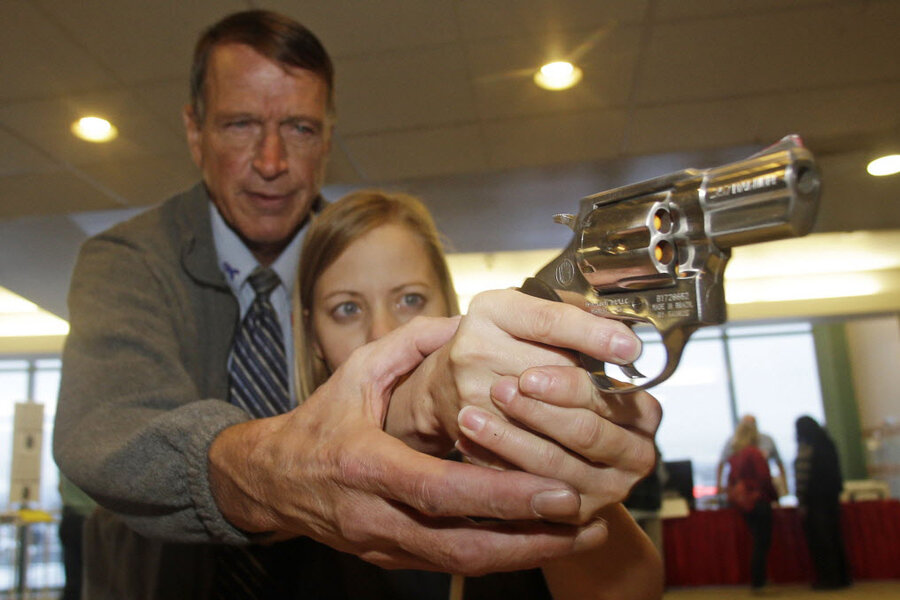24 Ohio educators receive firearm training through pilot program
Loading...
| Columbus, Ohio
Two dozen Ohio educators have gotten firearms training through a pilot program organized by a gun rights group after the Connecticut school shootings.
The three-day course organized by the Buckeye Firearms Association taught participants tactical maneuvers for reacting to school shooters. As part of the program, educators used model guns with plastic pellets while playing roles in gunman scenarios based on real-life situations, The Columbus Dispatch reported.
The Armed Teacher Training Program was conducted for the first time recently at the Tactical Defense Institute in West Union, in southern Ohio. The Buckeye Firearms Foundation paid $30,000 for the 24 educators to receive the training, said Jim Irvine, chairman of the association. Those selected to participate were among more than 1,400 applicants, the newspaper reported.
The program was organized after the December shootings at Sandy Hook Elementary School in Newtown, Conn., that killed 20 students and six staff members.
A part of the training includes role-playing, where class members posing as "good guys" shoot at those playing the "bad guys. An instructor at the institute said the pellets from the guns do hurt some, but that makes the scenarios seem more real.
Angie, a substitute teacher from northeast Ohio who was not identified by the newspaper other than by her first name, agreed. She said she found the role-playing valuable.
"You can walk through a scenario, you know, just mapping it out a hundred times, and it's not going to be as memorable," she said.
The scenarios were set in areas simulating school commons areas such as hallways and auditoriums and more enclosed spaces such as offices.
Irvine said arming teachers is the best way to stop more mass murders, and gun control can't help.
"Gun control is purely political and has no place in this conversation," Irvine told the newspaper.
But Toby Hoover, executive director of the Ohio Coalition Against Gun Violence, told The Associated Press that gun violence is a cultural and policy issue, and "anyone carrying a weapon into a school doesn't make policy or culture any better."
Course officials said all participants have gone through concealed-weapons training covering basic firearm safety and marksmanship, and obtained a permit. But school employees would need permission from their school boards to carry a gun at school.
Dick Caster, a senior consultant with the Ohio School Boards Association, said he isn't aware of any Franklin County school district that has allowed teachers with concealed guns into classrooms, although he said some districts in other parts of the state are considering it.
Irvine said some participants in the pilot program hope to persuade their boards to let them carry weapons, but he would not identify any districts.
Attorney General Mike DeWine has said that he would support allowing trained school officials access to a gun during classes if he were a member of a school board. The attorney general's office offers a four-hour "active shooter" class through the Ohio Peace Officer Training Academy. In that course, educators can learn how to respond if a shooter enters their school — through ways like escaping or blocking doors — but it doesn't include armed teachers.
Deanna Wilkinson, an associate professor of human development and family service at Ohio State University, says more research is needed before school boards widely adopt policies allowing teachers to carry guns.
"I don't care how much firearm training a teacher gets," she said. "I think kids will be afraid of their teachers."







